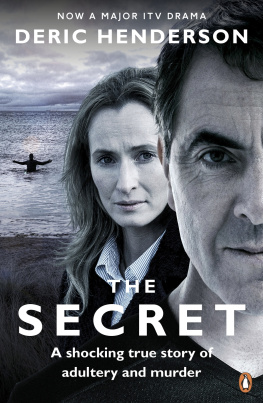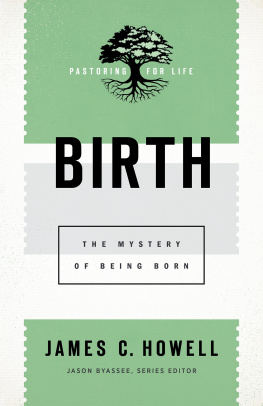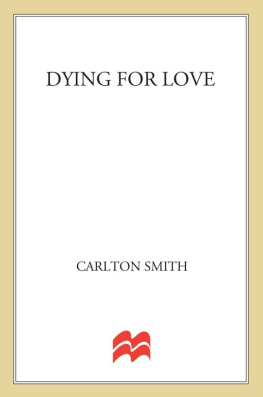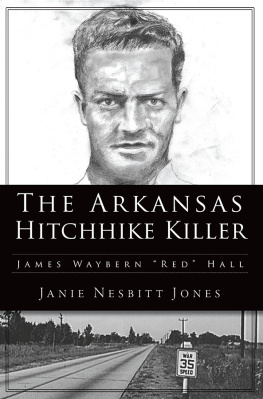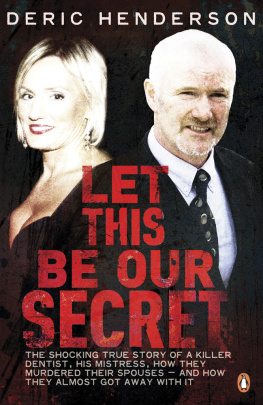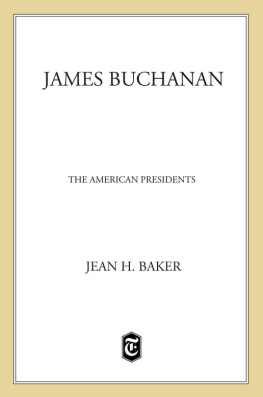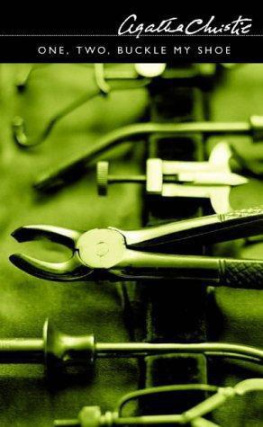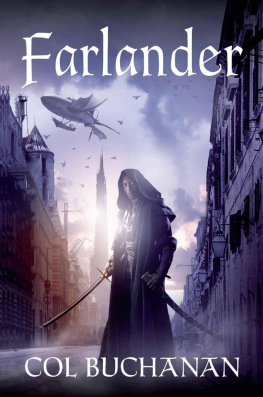Deric Henderson
THE SECRET
PENGUIN BOOKS
UK | Canada | Ireland | Australia
New Zealand | India | South Africa
Penguin Books is part of the Penguin Random House group of companies whose addresses can be found at global.penguinrandomhouse.com.
First published in Ireland by Gill & Macmillan 2011
First published in Great Britain by Penguin Books 2011
Previously published as Let This Be Our Secret
Copyright Deric Henderson, 2011
The moral right of the author has been asserted
Cover shows James Nesbitt (Colin Howell) and Genevieve OReilly (Hazel Stewart). Picture courtesy Hat Trick Productions
All rights reserved
ISBN: 978-0-24-195734-9
PENGUIN BOOKS
THE SECRET
Deric Henderson, formerly Ireland Editor of the Press Association and the 2010 Northern Ireland Journalist of the Year, spent two years investigating the background to this extraordinary story. He was all over this story from the outset. He was in court for the sentencing of Colin Howell and was on the Press Bench throughout Hazel Stewarts trial. For this book he draws on more than thirty interviews he conducted with relatives, friends and associates of Colin and Lesley Howell, Trevor Buchanan and Hazel Stewart. He also scrutinizes the initial police investigation that failed to detect a crime, and he examines how the affair embarrassed and then scandalized the Baptist Church community, of which both the Howells and Buchanans were members. The result is The Secret the definitive account of one of the United Kingdoms most extraordinary murder cases. Deric Henderson now runs his own public relations company, Deric Henderson Media.
This book is dedicated to my wife Clare and our two sons, Deric Jr and Edward. Where would I be without them?
Then, after desire has conceived, it gives birth to sin; and sin, when it is full-grown, gives birth to death.
(James 1:15)
Introduction
I broke a promise to write this book.
Having spent the best part of my adult life intruding on grief while reporting on the violence which once dominated so much of day-to-day life in Northern Ireland I vowed I would never again arrive unannounced on the doorstep of victims relatives. The pledge was made as I sheltered under an umbrella on a wet and miserable Sunday morning in June 1994 in the village of Loughinisland, County Down, where six men were shot dead as they watched a World Cup soccer match on a pub television the previous night.
A bereaved woman had answered my knock on her front door. She was wearing a black dress covered in specks of white fluff. The garment had obviously been hurriedly retrieved from the bottom drawer for a period of mourning. Her eyes were red and glazed and she twisted a white handkerchief in her hands. Excusing herself for looking so tired and weary, she politely refused my request for an interview.
I never walked up a driveway or garden footpath again to seek out personal testimonials from those in mourning not even when my home town of Omagh, County Tyrone, was bombed in the summer of 1998 leaving twenty-nine people dead, including a mother pregnant with twins. I left it to others to apologize for calling at such a bad time, before being invited inside to pose the difficult and painful questions.
The arrests of Colin Howell and Hazel Stewart in January 2009 changed all that.
Even though an entry in my diary of 20 May 1991 records the incident Couple die in suicide at Castlerock I did not recall the deaths of Trevor Buchanan and Lesley Howell. The tragedy barely registered outside Coleraine in County Londonderry where they both lived. But I remember the time well. The affable Peter Brooke was Secretary of State for Northern Ireland, the British Government was in secret talks with the leadership of the IRA and I was just out of hospital after a major health scare. The first faltering steps were being taken towards a peace settlement and the attention of those of us who waited to challenge the politicians emerging from the depressing Castle Buildings in Belfast was far removed from that beautiful stretch of the North Coast where the two bodies were discovered. Fast forward twenty years, and who would have believed so many column inches and so much air time would be devoted to a tragedy that had more or less passed us by?
It was a crime of passion which went undetected for so long because of the cunning and guile of the two people who carried it out: Colin Howell, a narcissistic but seemingly harmless small-town dentist, and his obedient lover, Hazel Stewart. The ingenious and ruthless way in which they murdered Howells wife Lesley and Stewarts husband, Trevor Buchanan before fooling investigating officers into believing their partners had killed themselves means their evil deeds will live long in the memory. They left behind a trail of emotional carnage. Not just for those closest to them, especially their children and their wider family circles, but also in Howells case for the women patients the dentist abused while they were heavily sedated and under his care.
I found this a tough and demanding assignment. Many of the people interviewed made a deep and lasting impression on me, especially the brothers and two sisters of Trevor Buchanan. Listening to them was almost like witnessing their dead brother being brought back to life. The most poignant moment of all was when Victor Buchanan told how his grief-stricken father, Jim, reached into his sons coffin, gathered him into his arms and cried out: Why did you do it, son? Why didnt you come to me? Why didnt you come to me? Journalists can become detached and unfeeling, but this was the first time in over forty years in the business that I had to set down my pen and walk away to compose myself.
Colin Howell and Hazel Stewart had practically everything they ever wanted, except peace of mind. Howell emerged from a working-class background to make a good career and a lot of money. He regarded himself as a born-again Christian, as did Hazel Stewart, who led a fairly ordinary life until she started cheating on the man who worshipped the ground she walked on.
Howells guilty conscience finally got the better of him; and although Stewart continues to protest her innocence following her trial in 2011, no one in the courtroom in Coleraine will forget the moment a jury found her guilty at the end of fifteen unprecedented and dramatic days of evidence and legal submissions.
The Howell and Buchanan couples were devout Baptists, and this book also examines how their Church dealt with the whole affair. Perhaps those in their Church could have done things differently; perhaps they, like other people and institutions, stood little chance of penetrating Howells web of deception and Hazel Stewarts lies.
But the most pointed question of all must concern the incompetent police investigation which allowed the two perpetrators to get away with murder for so long. Even though she was troubled and in a loveless marriage, why would a young mother devoted to her children climb into the boot of a car and kill herself, just hours after she had booked a session on a sunbed for a couple of days later? Why would a police officer who had never before harboured thoughts of suicide even in the depths of despair suddenly change his mind and take his own life?

